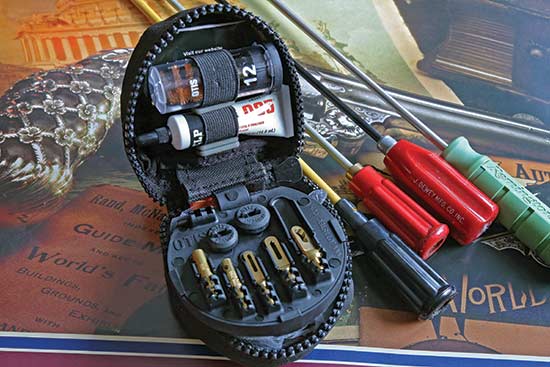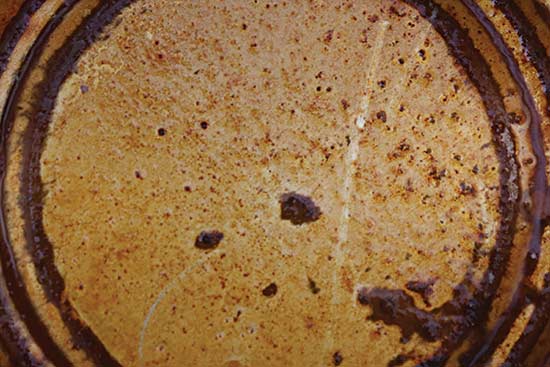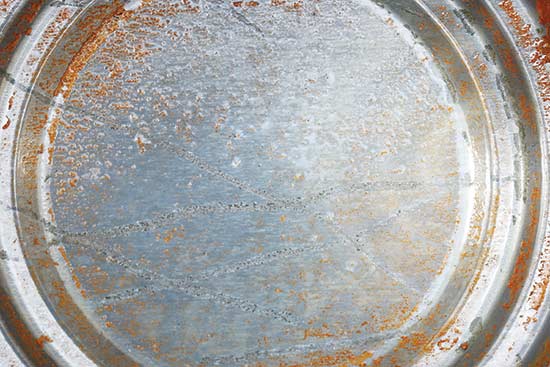Don’t Overdo It!
Over Cleaning Can Be As Bad As Neglect

If you own different caliber rifles you need two or three cleaning rods (center). Dave likes
one for .22 to .24 barrels, another for .25 to 7mm barrels, a third for .30 to .338 barrels. Otis
cleaning kit (bottom left) is versatile and compact. Boresnakes are handy when you’re far from
home and an emergency arises.
In selecting gun care products and developing cleaning routines we’re all subject to many influences such as initial training by a parent or by the military, the environment in which we hunt and shoot, the type and amount of shooting we do, brand loyalty, habit and tradition.
In recent years we’ve seen the introduction of new gun care products, often described as environmentally friendly, organic, biodegradable, or just “green.” The years have made me a hardened, bitter old cynic. When reading such terms I immediately think of an expensive product that doesn’t work very well.
The Stink
But in this case at least I have to admit I was wrong. What got me to try the newer products is quite simple: 40 below F. Many of my old favorite cleaning chemicals caution “use only in a well-ventilated area.” Maybe this is all legal boilerplate, but when the manufacturer says vapors from the product can be dangerous I tend to believe them.
Cleaning outdoors on the deck is usually not a hardship. But out here on the northern plains, when the last big game seasons close in December it can be mighty cold. Claims of “no dangerous vapors, no strong odors” piqued my interest.
Among the makers of products I’ve come to like and use are Ballistol, KG, M-Pro 7, Otis, Prolix and Seal 1. Nor has old reliable Hoppe’s been left behind; its newer “Elite” lineup is described as, “A complete departure from our traditional Hoppe’s No. 9 solvent, this high-tech, odorless technology outperforms the standard cleaners and oils on the shelf today.”
Casual Protection
Next to the ready rack I keep soft cloths sprayed with metal protectant. Anytime I handle a rifle, before it goes back on the rack I wipe down the metal parts. It’s a habit formed with blued carbon steel guns, one I persist in even with stainless firearms. It takes about 10 seconds. I don’t call this gun cleaning, though.
When I do clean, I really make a job of it. I don’t clean rifles during hunting season unless they get soaked in a rain or something. At the end of the season I disassemble the rifles as far as I can and meticulously clean every part. The process includes carefully inspecting components for wear or damage. Before reassembly all metal surfaces get treated with some sort of metal preservative, then the rifle goes on the racks of the climate-controlled gunroom.
Where I break with tradition (and drive some of my rifle enthusiast friends nuts) is in bore cleaning. On this subject my views have evolved over the years. I used to uncritically believe a centerfire rifle bore needed cleaning after every use, and after every 20 shots or so during use. I’ve come to believe more barrels are being worn out by overzealous cleaning than by shooting.

Dave started with two coffee cans, both cleaned and dried. The first (top) stayed unprotected,
and the second got a quick spray of Otis Long Term. Adding a few inches of water and a double
handful of salt, Dave snapped on the plastic lids on, letting them stand for six months. The raw lid
rusted while the protected one managed much better.
Same Day?
Many of my shooting friends believe same-day cleaning, even after firing a dozen shots (or maybe only one) is not only proper maintenance, but morally right. When I suggest the possibility they are doing more damage to the bore with cleaning rod and chemicals than if they just left it alone, they react with outrage. Sacrilege!
At ranges over the years I’ve seen a lot of shooters cleaning bores. I still see a lot of cheap 3-piece cleaning rods. Or if the shooter buys a quality 1-piece rod he’ll get one to fit 0.22-inch bores and use the same rod for his 0.308-inch barrels, where it bends and rubs the bore. Not 1 in 20 uses a bore guide to keep the rod centered.
More than once I’ve winced to see one shooter holding the rifle down on a bench while another pounds on the cleaning rod to dislodge a stuck patch. Another ploy is to use an aggressive copper solvent and leave it in the bore far longer than the manufacturer’s directions, or getting it on exterior surfaces and damaging blued finishes.
Frankly without the right tools and technique constant bore cleaning does more harm than good. But I realize I won’t change any minds. I’ve had friends call my character into question for not cleaning my rifle bore until the end of hunting season saying, “I couldn’t sleep without knowing my rifle is clean, lubed, and ready to go.”
Well, a freshly cleaned and lubed firearm is ready to go into storage, not into service. I’d never consider taking a rifle out hunting without firing a couple of groups to check point of impact, to foul the bore, and to be certain the rifle feeds, chambers, extracts and ejects cartridges reliably.




